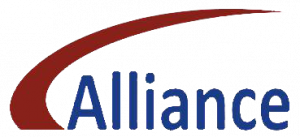 https://twitter.com/home https://www.facebook.com/Shabbir.Hussain191
https://twitter.com/home https://www.facebook.com/Shabbir.Hussain191By Shabbir Hussain
ISLAMABAD, Jan 6(Alliance News): Pakistan’s Ministry of Health and it’s all attached department have to speed up its human immunedeficiency virus control strategy to achieve targets in fast-track against HIV as the number of HIV/AIDS cases have significantly increase here, which is a much-worried situation for the country.
According to the World Health Organization (WHO), about 38 million people around the world are currently living with HIV/AIDS and the highest ratio of such cases has been recorded in in the regions of Africa, Asia, and the Pacific.
In recent years, the HIV pandemic has had a tremendous effect on children. Around 10% of new HIV infections in the world are seen in children. The number of children infected with HIV has increased significantly since the first cases of AIDS were identified in 1982, mostly in developing countries.
WHO in its report 2010 said that an estimated 3.4 million children under the age of 15 were living with HIV globally.
In Pakistan, the burden of HIV has increased at an alarming rate in recent decades, and the death toll has risen. According to the National Health Survey report, Pakistan has an estimated 150,000 HIV patients, with 75,000 in Punjab, 15,000 in Khyber Pakhtunkhwa, and 5,000 in Baluchistan. By August 2018, Sindh had an estimated 60,000 HIV-positive patients.
According to the Sindh AIDS Control Programme (SACP), 42,533 people were screened by November 30, 2020, and 1,438 were found to be HIV positive and registered at the Ratodero ART Centre. Among them, there were 1,076 children in total, with 666 boys and 410 girls.
The SACP has announced that 34 children and four adults have died due to the Ratodero outbreak.
Challenges to cope with the disease:
The average monthly household income in Pakistan is roughly $260, but most people in Ratodero sustain on much less.9 In 2006, the cost of generic medicines for an HIV patient in Pakistan ranged from $300 to $500 (£174 to £291; €254 to 424€),10 which would have increased if inflation had been factored in overtime.
The National AIDS Control Programme (NACP), with the help of the Global Fund, has developed 45 HIV treatment centers across the country’s four provinces,11 people living with HIV often have to travel long distances to avail necessary treatment and pay out-of-pocket to cover for travel costs.
Efforts to handle fast spreading HIV in the province
The Sindh AIDS Control Program (SACP) and the provincial Department of Health (DOH) have led the response to the incident. UN partners, the Pakistan Field Epidemiology & Laboratory Training Program (FELTP), Aga Khan University, and other partners have all contributed a lot to tackle this situation.
Shaikh Zaid Children’s Hospital in Lahore opened a new HIV/AIDS ART Treatment Center for children. Laboratories, blood banks, and clinics that were not approved have been shut down which was a step in the right direction to curb the outbreak.
Throughout the first half of 2019, a mission led by the Federal Ministry of Health (MOH) and WHO, with help from other UN partners and academia, was carried out.
The goals were to classify HIV transmission sources and chains, map high-risk areas, and identify gaps in HIV detection, care, and treatment.


